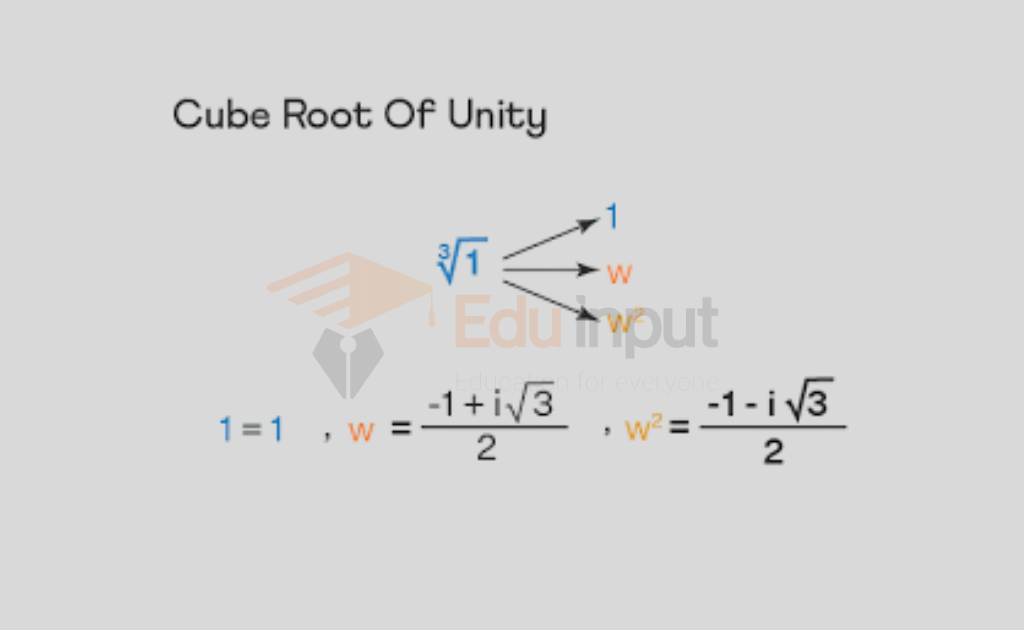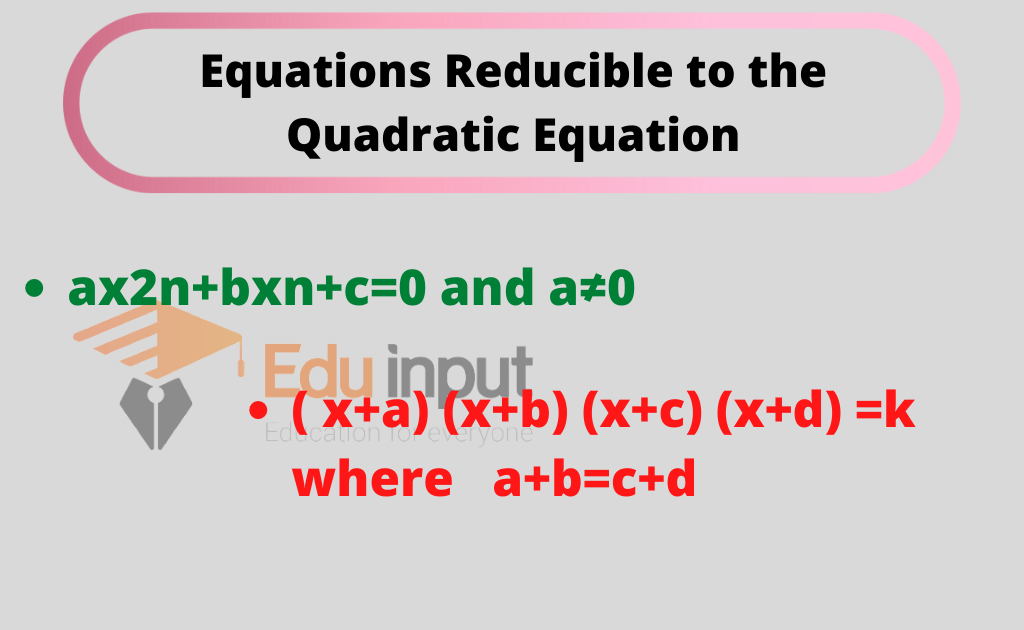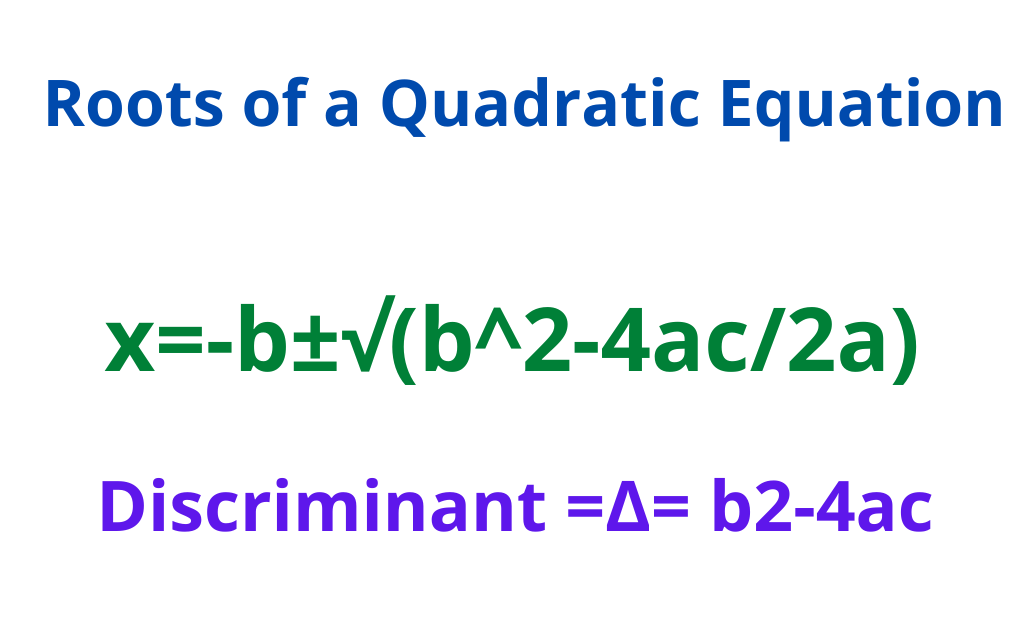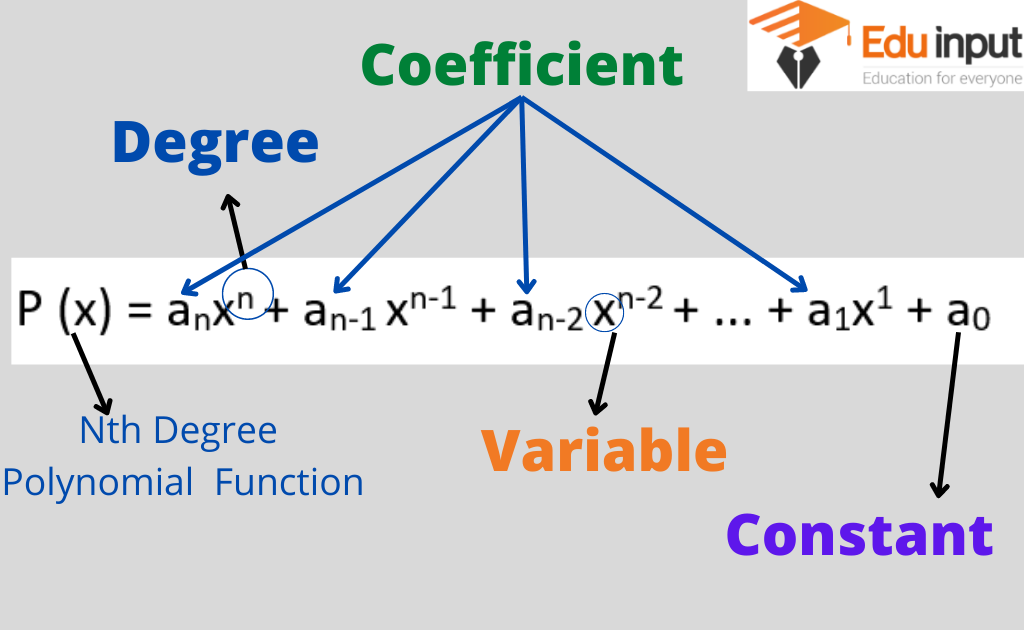Introduction to Quadratic equation

What is a quadratic equation?
A quadratic equation in variable X is an equation in which the greatest exponent of the variable is two.
For example:
3x2+4x+2=0
General form of quadratic equation
ax2+bx+c=0
Where a, b, c, ε R and a ≠o or where a,b,c are real numbers and a≠o
If a=o
Than bx +c=0 which is not quadratic equation .it becomes linear equation.
If b=0
Then ax2+c=0 which is also a quadratic equation. But this is called a pure quadratic equation.
Example:
2x2+5x+7=0 (general form quadratic equation)
3x2+2=0 ( pure quadratic equation)
X+1=0 (linear equation)
How to solve a quadratic equation?
- Factorize
- Completing the square
- Using quadratic formula
- Graphing
What is roots?
The solution of an equation is also called its roots.
Roots
- One root will be reciprocal to the other. If a=c
The coefficient of x2 is equal to the constant.
For example:
2x2+5x+2=0
2x2+4x+x+2=0
2x(x+2) +1(x+2) =0
(2x+1)(x+2)=0
2x+1=0 x+2=0
2x=-1 x=-2
X= -1/2 x=-2
- One root is zero if c=0
For example:
2x2+4x=0
2x(x+2) =0
2x=0 x+2=0
X=0 x= -2
- The roots are equal in magnitude but opposite in direction (sign) if b=0
For example:
X2-4=0
X2= 4
square roots on both side
X=±2
X=2 x= -2
- If a+b+c=0
If sum of all coefficient is equal to zero. Then 1, c/a are the roots
For example:
2x2-5x+3=0
2x2-2x-3x+3=0
2x(x-1)-3(x-1) =0
(2x-3)(X-1)=0
2x-3=0 x-1=0
2x=3 x=1
X= 3/2 x=1
X=1 x= 3/2
- If a-b+c =0 than the roots are -1 , -c/a
For example:
2x2+5x+3=0
2x2+2x+3x+3=0
2x(x+1) +3(x+1) =0
(2x+3)(x+1)=0
2x=-3 x=-1
X=-3/2 x=-1
- if one root is is p+iq than the second roots will be p-iq
- if one root is p+√q than second root p- √q
- The quadratic equation whose roots are reciprocal of the roots of ax2+bx+c=o is cx2+bx+a=0
For example:
3x2+7x+4=0
3x2+3x+4x+4=0
3x(x+1) +4(x+1) =0
(3x+4)(x+1)=0
3x+4=0 x+1=0
3x=-4 x=-1
X= -4/3 x=-1
For example:
4x2+7x+3=0
4x2+4x+3x+3=0
4x(x+1) +3(x+1) =0
(4x+3)(x+1)=0
4x+3=0 x+1=0
4x=-3 x=-1
X= -3/4 x=-1
- If a=1 and b,c ε z then the roots are rational numbers and must be integers.
For example:
X2+5x+6=0
X2+3x+2x+6=0
X(x+3) +2(x+3) =0
(x+2)(x+3) =0
X+2=0 x+3=0
X=-2 x=-3
- ax2 +bx +c=0
Sum of the roots =S= -b/a
b=coefficient of x
a=coefficient of x2
Product of the roots =p=
C=constant
a=coefficient of x2
Frequently Asked Questions-FAQs
what are Quadratic equation
A quadratic equation in variable X is an equation in which the greatest exponent of the variable is two.
For example:
3x2+4x+2=0
What Are the 3 Forms of a Quadratic Expression?
The three forms of quadratic expressions are
Standard form
Factored form
Vertex form
what is the general from of quadratic equation?
The general form of a quadratic equation is ax2+bx+c=0
Where a, b, c, ε R and a ≠o or where a,b,c are real numbers and a≠o
what are the method to solve a quadratic equation?
there are three basic techniques for solving a quadratic equation
by factorization
by completing square
by applying the quadratic formula
what is Roots?
The solution of an equation is also called its roots.

 written by
written by 





Leave a Reply